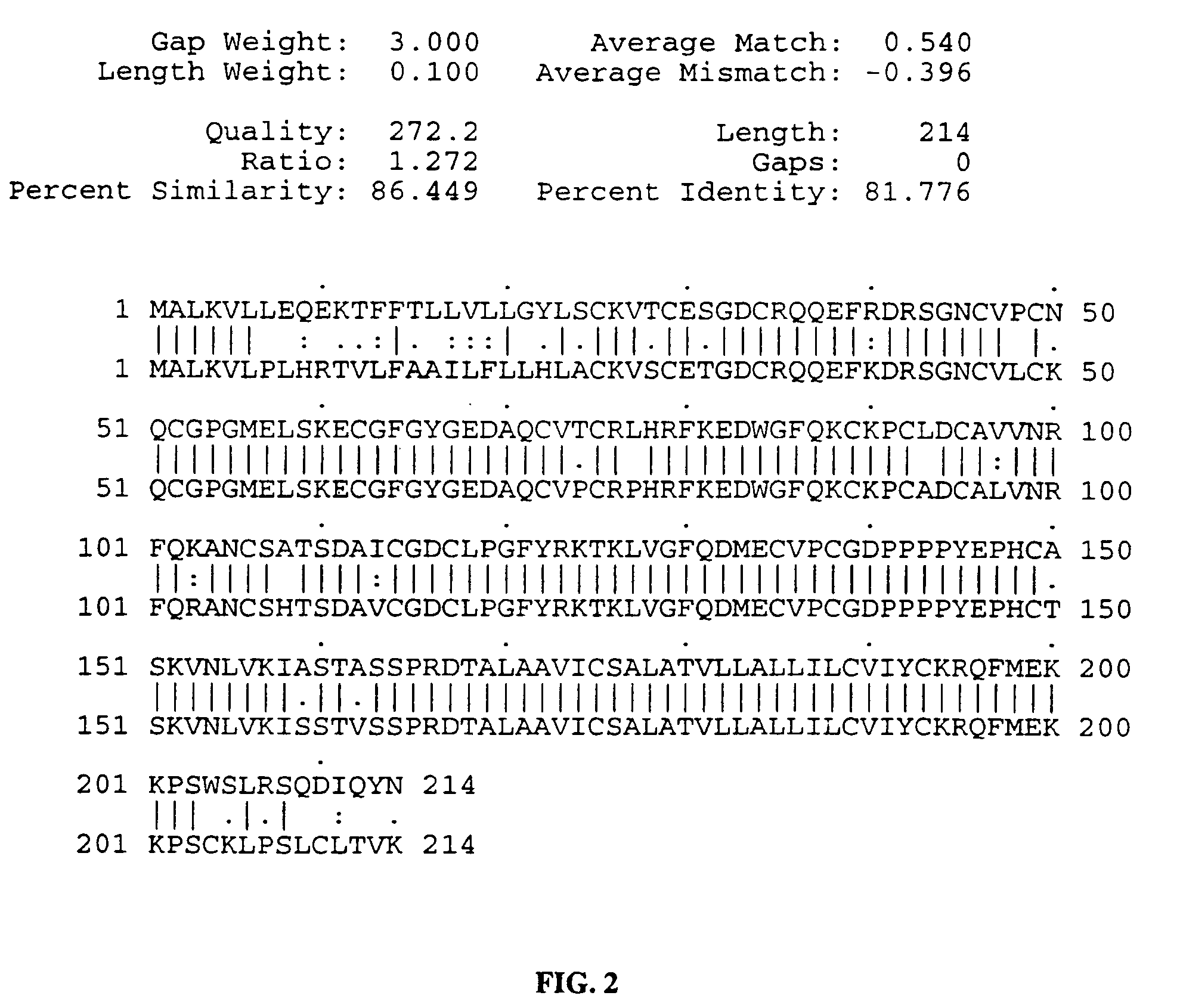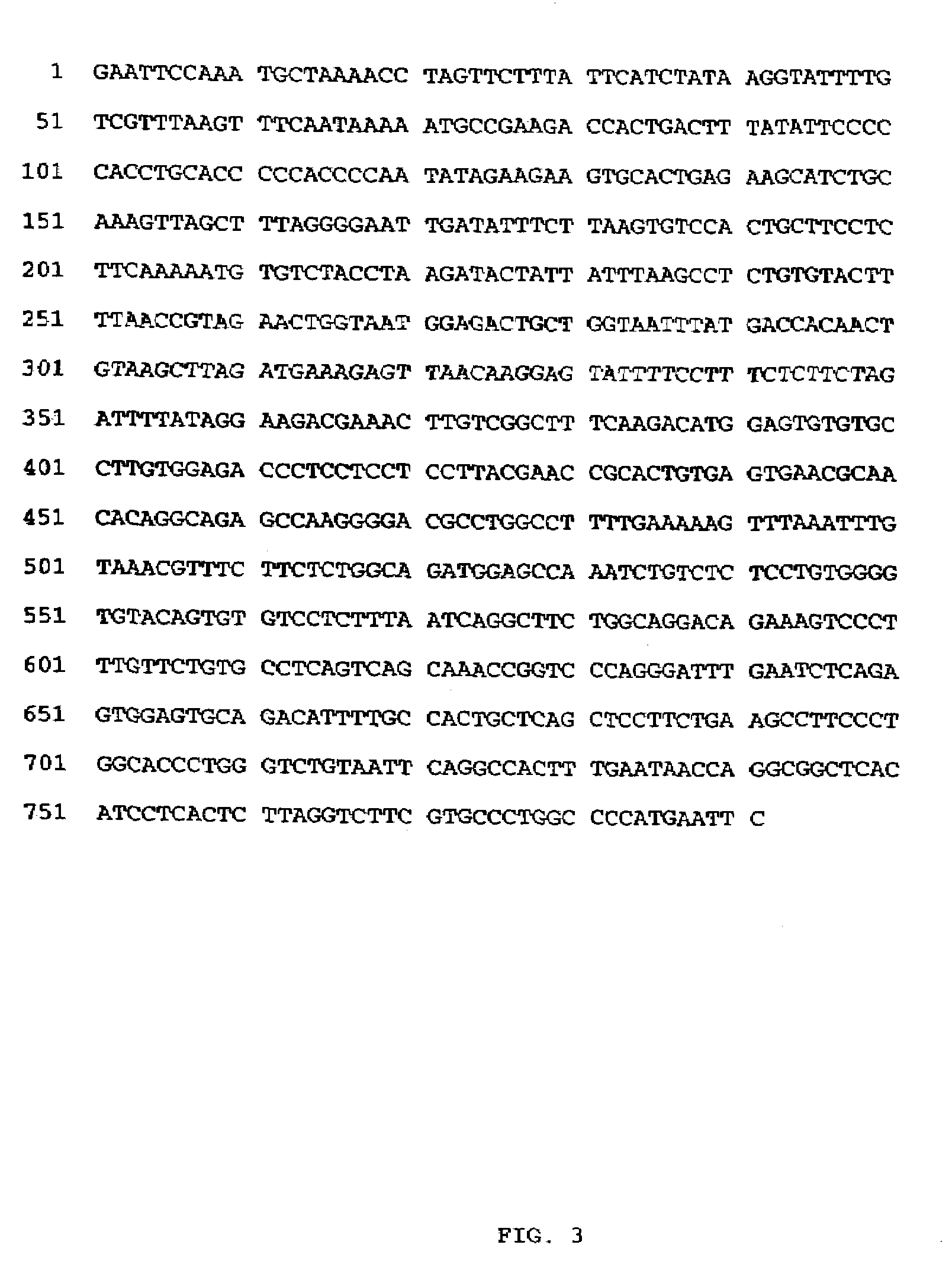Nucleic acids encoding TRAIN-R: a cysteine rich member of the TNF-receptor family
a technology of tnf receptor and nucleic acid encoding, which is applied in the direction of fusion polypeptide, peptide/protein ingredient, depsipeptide, etc., can solve problems such as affecting the biological respons
- Summary
- Abstract
- Description
- Claims
- Application Information
AI Technical Summary
Benefits of technology
Problems solved by technology
Method used
Image
Examples
Embodiment Construction
Generation of Soluble Receptor Forms:
[0067]To form an receptor inhibitor for use in man, one requires the human receptor cDNA sequence of the extracellular domain. If the mouse form is known, human cDNA libraries can be easily screened using the mouse cDNA sequence and such manipulations are routinely carried out in this area. With a human cDNA sequence, one can design oligonucleotide primers to PCR amplify the extracellular domain of the receptor in the absence of the transmembrane and intracellular domains. Typically, one includes most of the amino acids between the last disulfide linked “TNF domain” and the transmembrane domain. One could vary the amount of “stalk” region included to optimize the potency of the resultant soluble receptor. This amplified piece would be engineered to include suitable restriction sites to allow cloning into various C-terminal Ig fusion chimera vectors. Alternatively, one could insert a stop signal at the 3′ end and make a soluble form of the recepto...
PUM
| Property | Measurement | Unit |
|---|---|---|
| soluble | aaaaa | aaaaa |
| length | aaaaa | aaaaa |
| dimeric soluble | aaaaa | aaaaa |
Abstract
Description
Claims
Application Information
 Login to View More
Login to View More - R&D
- Intellectual Property
- Life Sciences
- Materials
- Tech Scout
- Unparalleled Data Quality
- Higher Quality Content
- 60% Fewer Hallucinations
Browse by: Latest US Patents, China's latest patents, Technical Efficacy Thesaurus, Application Domain, Technology Topic, Popular Technical Reports.
© 2025 PatSnap. All rights reserved.Legal|Privacy policy|Modern Slavery Act Transparency Statement|Sitemap|About US| Contact US: help@patsnap.com



